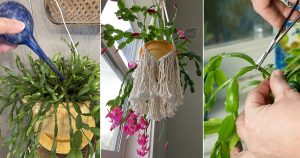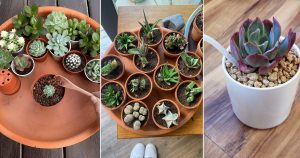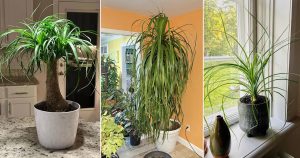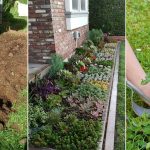Always been intrigued by the Red Flames plant? It’s time to get up close and personal with these Campfire succulent care and growing tips!
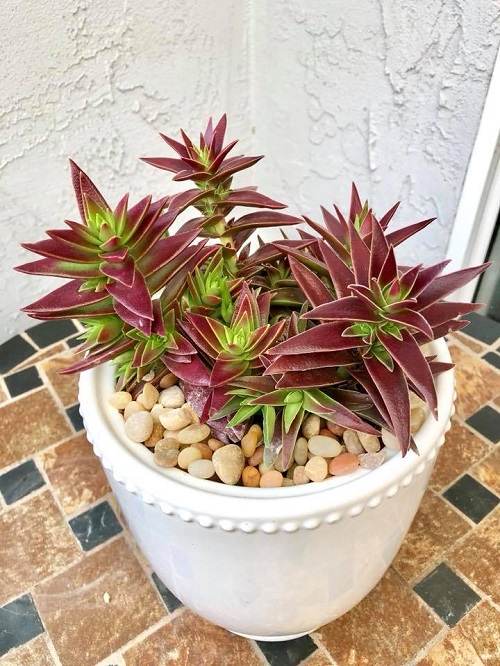
Every plant species in the Crassula genus is incredibly diverse and comes in all shapes, sizes, and colors. But in this post, we are going to tackle the Crassula ‘Campfire’, aka Red Pagoda. Straight from South Africa, it is also famous for its low-maintenance and drought-tolerant nature. So, read along!
Campfire Succulent—Key Facts
| Common Name | Red Pagoda or Red Flames |
| Botanical Name | Crassula capitella ‘Campfire’ |
| Native Place | South Africa |
| USDA Zones | 9a – 11b |
| Size | 6 inches tall and 2 to 3 feet wide |
| Flowering | Blooms in spring and summer |
| Light | 6+ hours of sunlight |
| Temperature | 65°F to 75°F (18°C to 24°C) |
| Soil | Potting soil with coarse sand and perlite |
| Watering | Every 2 to 3 weeks |
| Fertilizer | During growing season |
| Pests & Diseases | Mealybugs, aphids, and spider mites |
| Propagation | Stem cuttings |
Campfire Succulent Plant Information
Now that we have started familiarizing ourselves with the Red Pagoda, there is a lot more to uncover. The very first thing to note about this succulent is that it is quite eye-catching. With densely stacked, propeller-like leaves that start pale green, the Red Pagoda lives up to its name as these leaves start changing color to a bright scarlet under bright sunlight.
In fact, you would see the most brilliant ‘campfire-like’ coloration, that is, with the tips and edges of the green leaves turning red while the centers still remain green—in winter. This is because of cooler temperatures and bright, direct sunlight.
This plant has a low-growing, mat-forming growth habit and spreads by runners. So, if you are looking for a suitable ground cover for a small space, this would be your best choice. Plus, It also works wonderfully in hanging baskets, where its beautiful leaves can trail down gracefully.
Campfire Succulent Propagation
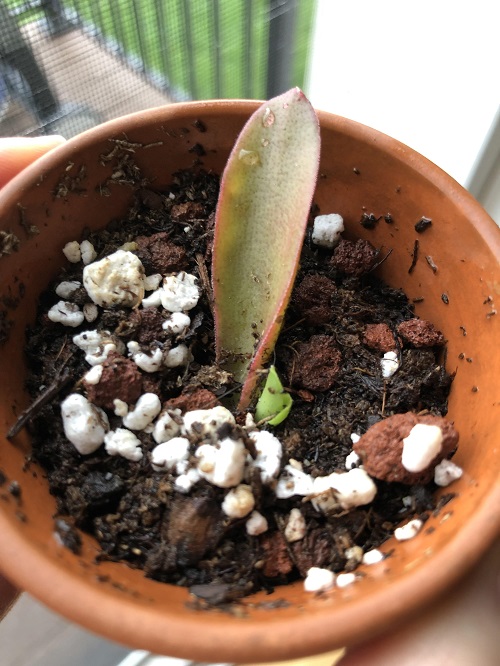
The best way to propagate Crassula ‘Campfire’ is through stem cuttings, and it should be done during the active growing season of spring and summer. Using sharp pruning shears, make clean cuts in the parent plant gently so as not to cause any tissue damage.
When you obtain a healthy stem, let it callus over for a few days. This essentially means you let the cut surface dry. Finally, plant the stem in well-draining soil, ensuring adequate drainage and bright, indirect light. With patience and proper care, you will start seeing new roots emerging.
Note: It is possible to propagate the Campfire plant with leaf cuttings, too. But, keep in mind that leaf propagation may take longer and has a lower success rate than stem cuttings. If you’re just starting out, stem cuttings are your best bet!
Campfire Succulent Pot Size
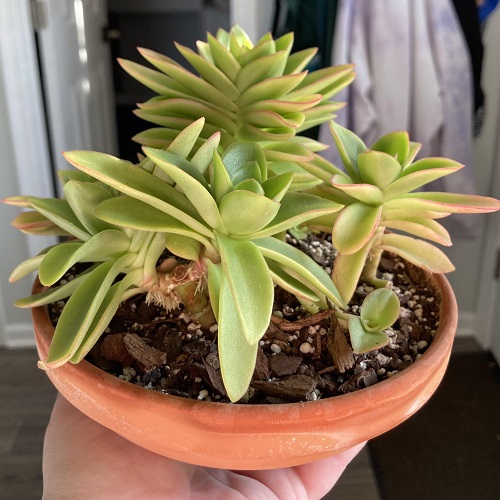
Choosing the right pot size for a succulent like Campfire is crucial to prevent issues like root rot and also to promote healthy growth. It is also important for factors such as moisture retention and good airflow to the roots, which are necessary for your Crassula to thrive.
When choosing pot size, you must check the stage of development your succulent is in. For example, at the seedlings stage, you would want to plant it in a pot that is 2 to 4 inches in diameter. As your plant grows, you need to upgrade its pot size by 2 inches for ample space for growth, while also ensuring no excess soil, which could retain unwanted moisture. At the mature stage, a 10 to 12-inch pot would work best for your succulent.
In terms of material, terracotta is the most advantageous, with clay right behind. This is because of their porosity, which lets moisture evaporate faster, keeping the container dry enough to sustain a succulent like Red Pagoda.
Also, make sure the pot has a drainage hole—this might sound obvious, but many decorative pots don’t, and that’s one of the quickest ways to end up with root rot.
Campfire Succulent Requirements
1. Light
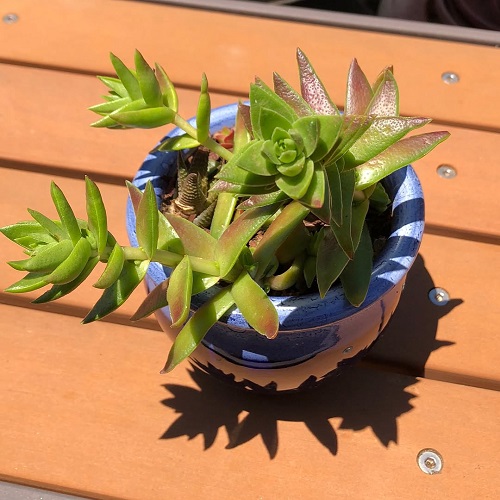
Like most succulents, the Red Pagoda thrives in full sunlight for at least 6 hours daily. Ensuring high light intensity will encourage the colors of this plant to be more vibrant and display its characteristic hues. Though this succulent can survive in partial sun too, it won’t bode too well for the signature colors, which might start to look dull.
For your plant to truly flourish, you should grow it outdoors or indoors in locations that allow for optimal sunlight, such as right next to a bright window.
2. Water
In the wild, the Red Pagoda grows in semi-arid conditions, and that’s what you need to mimic when growing this plant. In its native habitat, rain is quite infrequent, which makes this plant drought-tolerant. As is characteristic of succulents, it stores enough water in its fleshy leaves and requires minimal watering.
Deep watering every three weeks is enough to maintain its health and vigor. What you must ensure is a well-draining soil mix, which is more important than forgetting to water for a couple of weeks.
3. Soil

A cactus or succulent mix would work best for the Red Pagoda. You could either buy it from stores or even DIY a custom soil mix. For that, you would need to blend 2 parts potting soil with 1 part each of perlite and coarse sand. You can improve drainage by adding a layer of gravel to the bottom of the pot and then adding the soil mix.
Note: The key is to give your plant sandy soil, low in nutrient content, that does not clump when you squeeze it between your fingers.
4. Temperature
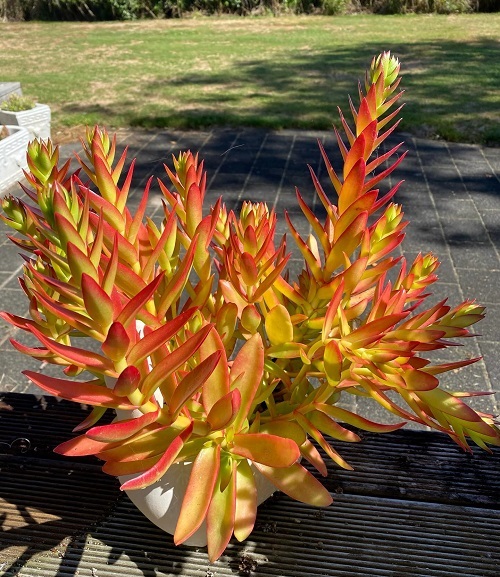
Noted for its tolerance of super-high to super-low temperatures, the Red Pagoda is resilient against both -5℃ (23℉) to 43℃ (109℉). Now you know why this plant is so sought after! Of course, you must take extra care of your plant during temperature extremes.
While in excessive cold, your plant might get frostbite, like blackened leaves, and excessive heat can lead to wilting or sunburn. In the latter case, increase watering or offer shade in the hottest parts of the day.
Campfire Succulent Care
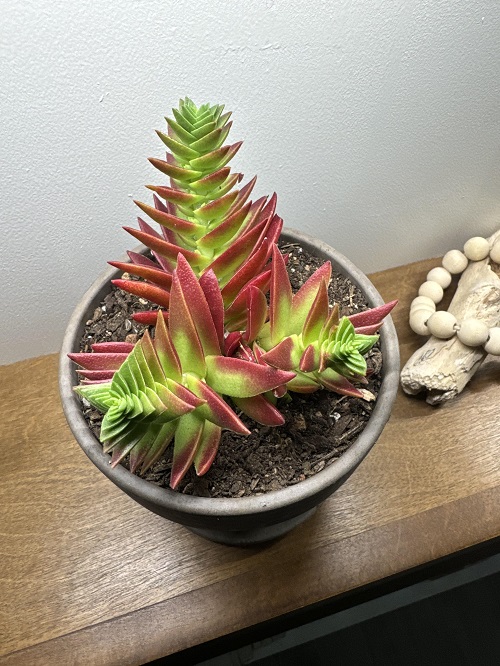
1. Fertilizer
Like the soil, you must feed this succulent with cactus or succulent-specific food. Do feed once a month during the growing seasons of summer and spring; you can reduce it to once every three or four months as fall and winter approach.
Make sure to always dilute the fertilizer to 50% of the recommended dosage to avoid overfertilizing.
Pro tip: Water Red Pagoda before fertilizing to increase nutrient uptake and prevent damage to roots.
2. Pruning
Pruning is especially necessary for large succulents to keep them compact, healthy, and in good shape. In terms of the Red Pagoda, you will need to remove any overgrown stems or leaves using sharp, clean garden shears. Aim for a 45-degree cut every time, which also allows you to get cuttings so you can propagate new plants!
Pro tip: When propagating cuttings, smear some sulfur powder on the ends of the cut stems and plant them after a few days allowing the wound to callus over.
3. Pests and Diseases
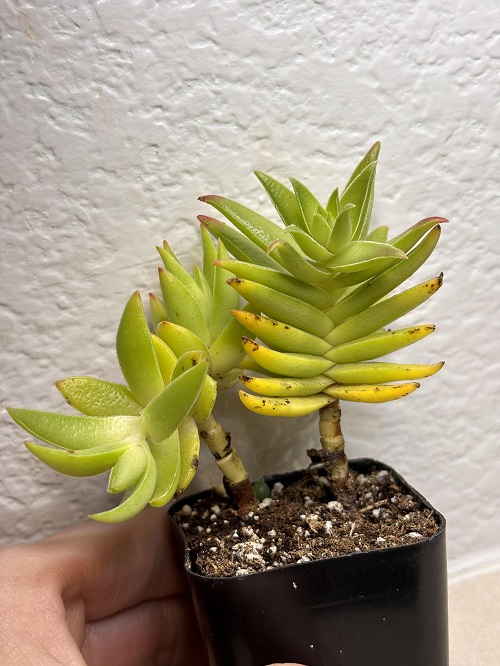
Though the Red Pagoda is virtually disease-free, there are still a few pests that you must monitor your plant for. Check for pests like aphids, mealybugs, and vine weevils.
One devastating disease that Red Pagoda is susceptible to is leaf rot, which is quite similar to root rot, as it happens because of overwatering and poor drainage. This is, of course, preventable with the right care.
You can treat minor pest infestations by dabbing neem oil or rubbing alcohol directly onto the bugs using a cotton swab. Just remember to test it on one leaf first!
And that’s all about the care and growing tips you need to keep in mind when growing the Crassula ‘Campfire’ succulent. Follow these and let us know how it goes for you in the comments below!

